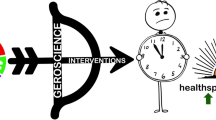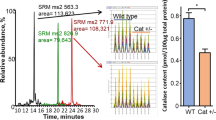Abstract
Aging can be characterized in all living organisms as the inevitable biological changes that occur with advancing age. The aging process is time-dependent and leads to functional declines and increased incidences of disease. The underlying pathphysiologic processes of aging may best be explained using several interacting biological processes: genomic activity, oxidative stress, and age-related disease processes, all of which modify the rate and progression of aging. In this report, we describe a database, termed AgingDB, used to retrieve information on the biomolecules known to be modulated during the aging process and by the life-prolonging action of caloric restriction (CR). To enhance the usefulness of AgingDB, we include data collected from studies of CR’s anti-oxidative action on gene expression, oxidative stress, and many chronic age-related diseases. We organized AgingDB into two sections A) apoptosis and the various mitochondrial biomolecules that play a role in aging; B) nuclear transcription factors known to be_sensitive to oxidative environment. AgingDB features an imagemap of biomolecular signal pathways and visualized information that includes protein-protein interactions of biomolecules. Authorized users can submit a new biomolecule or edit an existing biomolecule to reflect latest developments. By making available the most update information through AgingDB, we expect to assist researchers who are exploring the molecular basis of age-related changes modified by the life-prolonging action of CR. For the reader’s convenience and accessibility, AgingDB is freely available at http://agingdb.bio.pusan.ac.kr/.
Similar content being viewed by others
References
Dice, J.F.: Celluar and molecular mechanisms of aging. Physiological Reviews, 73: 149–159, 1993.
Yu, B.P.: Aging and oxidative stress: modulation by dietary restriction. Free Radical Biology and Medicine, 21: 651–668, 1996.
Harman, D.: Free radical theory of aging. Triangle, 12: 153–158, 1973.
Bodamyali, T., Stevens, C.R., Billingham, N.E.J., and Blake, D.R.: Influence of hypoxia in inflammatory synovitis. Annals of the Rheumatic Diseases, 57: 703–710, 1998.
Lykkesfeldt, J., Hagen, T.M., Vinarsky, V., and Ames, B.N.: Age-associated decline in ascorbic acid concentration, recycling, and biosynthesis in rat hepatocyes-reversal with (R)-•-lipoic acid supplementation. The FASEB Journal, 12:1183–1189, 1998.
Kamada, T., Kawai, S.: An algorithm for drawing general undirected graphs, Information Processing Letters, 31: 7–15, 1989.
Bishop, M.J.: Genetic databases, Academics Press, 1999, p24.
Slonim, D.K.: From patterns to pathways: gene expression data analysis comes of age. Nature Genetics supplement, 32: 502–508, 2002.
Petra, T.E., Amilcar, F.M., Ståhlberg, N., Malek, R.L., Lee, N., and Norstedt, G.: Gene expression profile of the aging process in rat liver: normalizing effects of growth hormone replacement. Molecular Endocrinology, 15(2): 308–318, 2001.
Lee, C.K., Klopp, R. G., Weindruch, R., and Prolla, T.A.: Gene expression profile of aging and its retardation by caloric restriction. SCIENCE, 285: 1390–1393, 1999.
Kaeberlein, M., Jegalian, B., and McVey, M.: AGEID: a database of aging genes and interventions. Mechanisms of Ageing and Development, 123(8): 1115–1119, 2002.
Park, J., Lappe, M., and Teichmann, S.A.: Mapping protein family interactions: intramolecular and intermolecular protein family interaction repertoires in the PDB and yeast. Journal of Molecular Biology, 307: 929–938, 2001.
Wheeler, D.L., Church, D.M., Lash, A.E., Leipe, D.D., Madden, T.L., Pontius, J.U., Schuler, D.G., Schriml, L.M., Tatusova, T.A., Wagner, L., and Rapp, B.A.: Database resources of the national center for biotechnology information. Nucleic Acids Research, 30: 13–16, 2002.
Bairoch, A., Apweiler, R.: The SWISS-PROT protein sequence database and its supplement TrEMBL in 2000. Nucleic Acids Research, 28: 45–48, 2000.
Bateman, A., Birney, E., Cerruti, L., Durbin, R., Etwiller, L., Eddy, S.R., Griffiths-Jones, S., Howe, K.L., Marshall, M., and Sonnhammer, E.L.L.: The pfam protein families database, Nucleic Acids Research. 30: 276–280, 2002.
Author information
Authors and Affiliations
Corresponding author
About this article
Cite this article
Park, D.U., Kim, C.H., Hong, S.E. et al. AgingDB: A database for oxidative stress and calorie restriction in the study of aging. AGE 26, 11–17 (2003). https://doi.org/10.1007/s11357-003-0002-y
Issue Date:
DOI: https://doi.org/10.1007/s11357-003-0002-y




